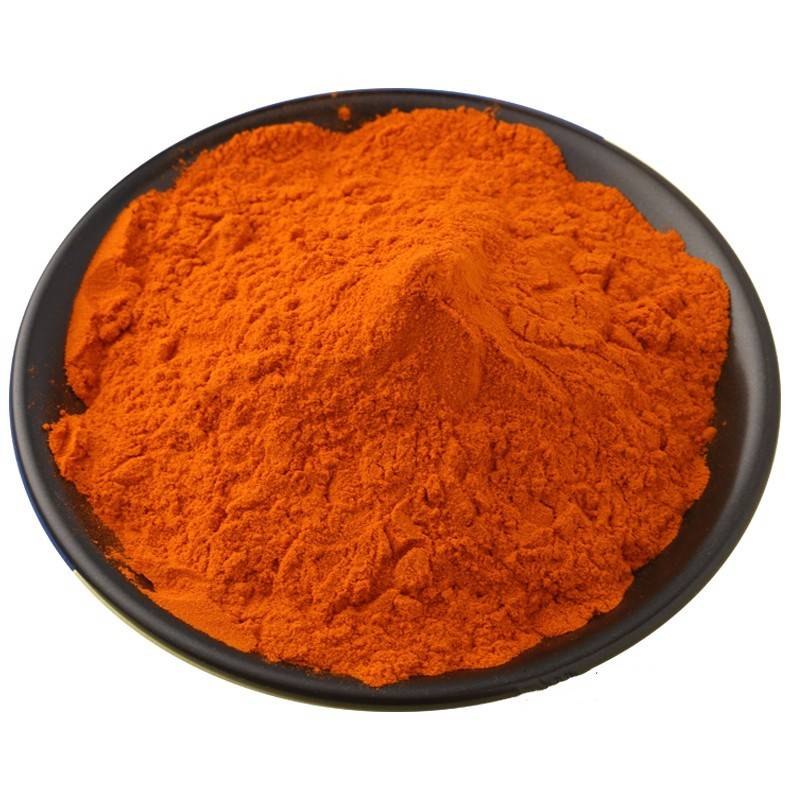천연색의 용도는 무엇인가?
합성색소 are mostly tar dyes, which not only have no nutritional value, but some are also harmful to the human body. Therefore, edible natural colors extracted from plants have recently received widespread attention from scholars at home and abroad, and there is a trend of replacing synthetic pigments. The types, extraction methods and development and application of natural colors are summarized below.
1 유형
자연 색 come from a wide range of sources, have complex compositions and are highly diverse. They can be divided into four main categories according to the extraction method: liquid or solid pigments extracted from animals and plants by juicing or solvent extraction; powdered pigments obtained by drying and grinding colored animals and plants; pigments that are fermented by microorganisms, the metabolites of which are separated into liquids or further processed into solid powders; and pigments made from natural products by enzymatic action. In addition to the turmeric, beetroot red, sodium copper chlorophyllin, paprika red, red yeast rice pigment, and carotene that were already in use, research has recently led to the development of corn yellow, sorghum pigment, radish red, rose bengal, gardenia yellow, tea pigment, indigo, sorghum red, black rice pigment, and safflower pigment. The development of China'의 천연색산업이 형성되기 시작했다.전국 천연색 총 생산량은 10만 톤 이상에 달했으며, 그 중 가장 대표적인 것은 캐러멜색 (즉, 설탕색), 정원색 황색, 정원색 청색, 강황, 아마란스색, 파프리카색, 차색소 등이다 [1].
2 추출과 분리
2. 1 추출방법
용매 추출: The most commonly used method is to follow the principle of like dissolves like, based on the polarity of the extracted ingredients in the raw material and the different physical and chemical properties of coexisting impurities, so that the mass transfer process of the active ingredients transferring from the solid surface or inside the tissue of the raw material to the solvent. Solvent extraction methods include maceration, percolation, decoction and reflux extraction. Water can be used as a solvent for Natural Colour extraction using the maceration and decoction methods, and organic solvents can be used for extraction using the reflux method. The solvents used for extracting some Natural Colours are shown in Table 1.
초임계 유체 추출:이것은 추출을 위해 기체와 액체 사이의 유체를 사용한다.유체는 용매특성이 우수하고, 저점도, 고밀도 및 유동성, 물질전달, 열전달 및 용해도 특성이 우수해야 한다.현재 가장 일반적으로 사용되는 용매인 CO2는 무독성, 불연성, 화학적으로 불활성, 저렴하고 매우 순수하며 환경 친화적입니다.고압하에서 용질은 유체에 용해된 다음 유체 용액의 압력이 낮아지거나 온도가 높아지면 초임계 유체에 용해된 용질은 밀도와 용해도의 감소로 침전된다.전통적인 공정과 비교해 작동 온도가 낮고 공정이 간단하며 효율이 높고 오염이 없는 장점이 있다.Rozzi[2]는 32-86 °C, 13.7800-48.2686 kPa에서 토마토 부산물로부터 리코펜을 추출하고, 38의 최대 추출율을 연구하였다.86 ℃와 34에서 8%를 얻었다.478 6 kpa.
초음파 추출:Ultrasonic waves are elastic waves that can generate and transmit powerful energy. They can penetrate deeper into plant tissue cells than electromagnetic waves and remain there for a longer period of time. Ultrasonic waves can cause liquid to be broken into many small cavities that close instantaneously, generating an instantaneous pressure of up to 3,000 Mpa, i.e., cavitation, which causes plant cells to rupture. In addition, ultrasound also has multiple effects such as mechanical vibration, emulsification and dispersion, and crushing, which can transfer, diffuse and extract the effective ingredients in plants. Therefore, using ultrasound to extract pigments is easy and fast, does not require heating, and has high extraction efficiency, speed and effectiveness, without damaging the structure. Li Yunyang et al. [3] used ultrasonic technology to extract brown pigment from chestnut shells and compared it with the conventional method. The results showed that ultrasonic extraction saves time and energy and has a high extraction rate. The optimal process parameters for ultrasonic extraction are a mass ratio of 1:10, an aqueous ethanol solution of 30% as the solvent, and 2 extraction times at 70 °C (1 h each). Wang Zhenyu et al. [4] found that at an ultrasonic frequency of 30 KHz, the highest extraction rate was obtained using dilute H2 So4 as the extracting agent at a mass fraction of 2% for 40 min at 50 °C.
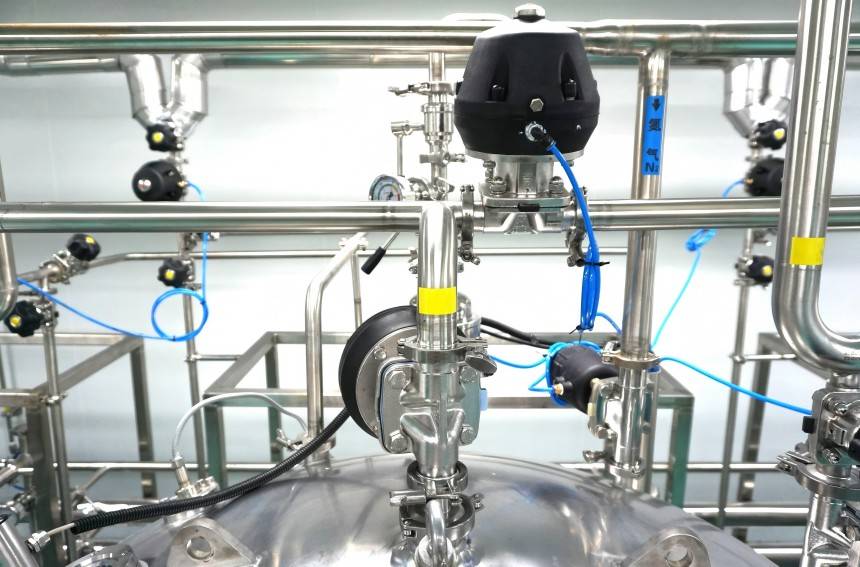
또한, 초음파를 이용하여 뽕나무 적색색소를 추출하는 경우에도 좋은 결과를 얻을 수 있었다.
Microwave extraction: Microwave technology has the advantages of rapid temperature rise, easy control, even heating, energy saving, etc. It can strengthen the extraction process, shorten the production cycle, reduce energy consumption, reduce waste, improve yield and extract purity, and has low operating costs and is environmentally friendly, with good development prospects. At present, reports on the use of microwave technology for the extraction of pigments involve alkaloids, flavonoids, tannins and other substances. Li Yu et al. [5] studied the microwave extraction of chamomile 노란색 색소, using anhydrous ethanol as the extracting agent (the mass ratio of chamomile to anhydrous ethanol was 1:70), microwave power 800 W, extraction time 450 s, and extraction was carried out three times. Compared with the solvent extraction method, the extraction time was reduced from 12 h to 450 s, and the extraction rate increased from 88.6% to 91.1%. Cai Jinxing et al. [6] used a microwave-ultrasonic method to extract strawberry pigments and study their physical and chemical properties. The results showed that the combined treatment of microwave and ultrasound can break the bonds of pigments, break up tissue cells, and improve the extraction rate of strawberry pigments.
효소 방법:식물 색소는 종종 세포벽에 둘러싸여 있는데, 대부분의 식물에서 세포벽은 셀룰로오스로 이루어져 있다.사용 cellulase을 깰 수 있 β-D-glucoside 본드, 식물 세포 벽을 파괴하고 용이하게 재료의 추출이다.이런 원리를 바탕으로 식물 성분을 추출하기 전에 셀룰라아제를 이용해 소화시키면 활성 성분의 추출률을 높일 수 있다.효소를 사용하든 사용하지 않든 추출물의 조성은 동일하여 효소가수분해가 식물성분을 파괴하지 않음을 알 수 있다.
공기폭발법 (Air burst method):이 방법은 식물조직 내의 공기가 압축되어 압력이 갑자기 방출되면 방출되는 강한 압력이 식물세포벽을 부수고 식물조직을 찢어 식물구조를 느슨하게하고 용매의 내부로의 침투를 용이하게 할 뿐만 아니라 접촉면의 표면적을 크게 증가시켜 활성성분을 추출할 수 있다는 점을 이용한 방법이다.이 방법은 뿌리, 줄기, 껍질, 잎 등의 섬유조직을 추출하는 데 적합하지만 아직 이에 대한 연구가 많지 않다.
2. 2분리 방법
Solution separation: The most common method is to use the different solubilities of the components of a mixture in a solution to achieve separation. For example, if the distribution coefficients of pigments in different polar solvents are different, select 3 to 4 solvents of different polarities (such as petroleum ether, chloroform, ethyl acetate and n-butanol) and perform stepwise extraction of the extraction solution from low polarity to high polarity to obtain extraction solutions with different polarities. Next, pigments can be separated at different pH values. For example, gradient pH extraction is a classic method for separating free anthraquinone derivatives and is also the most commonly used method for separating flavonoids. In addition, certain solvents or precipitants can be added to the sample solution to precipitate the separated substances in solid form through chemical reactions or by changing the pH or temperature of the solution, such as tannin pigments. For example, the precipitation of tannins with metal salts can be used for separation. Flavonoid pigments can also be separated using the precipitation method with lead salts. Adding a saturated aqueous solution of neutral lead acetate to an ethanol or methanol extract of traditional Chinese medicine causes flavonoids with o-dihydroxy or hydroxy groups to precipitate out.
막 분리:이것은 외부의 에너지나 화학적 전위차를 원동력으로 사용하여 혼합물을 분리, 분류, 정제, 농축하기 위해 천연 중합막 또는 합성 중합막을 사용하는 것을 말한다.색소 분리에서는 색소와 불순물의 분자 크기 차이를 이용한다.섬유성 ultrafiltration 막과 역삼투 막을 사용하면 다양한 불용성 거대 분자 (다당류 및 단백질 등)를 유지할 수 있습니다.이 방법은 간단하면서도 매우 효과적이여서 코코아색소와 적색효모색소를 분리하는데 사용할수 있다.또한 초미세여과막을 통해 펙틴과 같은 거대분자물질을 90% 이상 먼저 제거한 후, 역삼투막을 이용하여 20% 이상의 고형물로 농축시킬 수 있다.상온에서 작동하면 막이 색소를 100% 유지할 수 있습니다.안토시아닌 분리는 황산을 함유한 물로 추출한 다음, 초여과막을 이용하여 당이나 다른 저분자 물질을 선택적으로 제거하는 방법으로 수행되며, 수율을 2배 [7]까지 높일 수 있다.
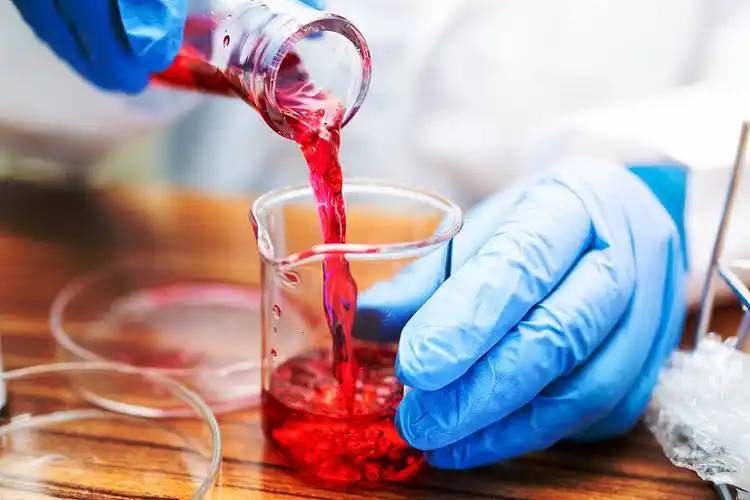
Column chromatography: refers to the use of different adsorbents or stationary phases to separate and purify pigments by column chromatography. For example, ion exchange resin column chromatography can be used to purify grape skin pigments and remove impurities such as sugars and organic acids; polyamide column chromatography is suitable for the separation of flavonoids, quinones, and phenolic pigments, such as safflower yellow pigments and red pigments; silica gel column chromatography is suitable for the separation of small molecule fat-soluble pigments; activated carbon column chromatography is used to separate water-soluble components, such as benzopyran pigments (anthocyanins, alizarin, and genipin, etc.). Macroporous adsorption resin has a strong adsorption effect on pigments and has a good adsorption and purification effect on a variety of Natural Colour. The adsorption and screening effect of the proposed separation substance using macroporous adsorption resin can achieve the purpose of separation. Most Natural Colors prepared using traditional processes have strong hygroscopicity. However, after being treated with a macroporous adsorption resin column chromatography, hygroscopic components such as sugars, inorganic salts, and mucus in the aqueous or alcoholic extract can be effectively removed, enhancing the stability of the product. Shen Yonggen et al. [8] found that X-5 resin has strong adsorption capacity at a pH of 4 and a flow rate of 2.0 mL/min. At room temperature and a desorption flow rate of 1.5 mL/min, the elution effect is best when 60% ethanol is used as the desorbent. Purification of purple sweet potato pigment with it can obtain a high purity pigment. Rukye Musa [9] used AB-8 macroporous adsorption resin column chromatography to enrich and purify the purple sweet potato extract, obtaining high-quality, high-purity anthocyanin-based Natural Colour.
박층 크로마토그래피 (Thin-layer chromatography, TLC):기본적으로 컬럼 크로마토그래피와 원리가 유사하며, TLC는 흡착제의 입자 크기가 더 미세하고, 일반적으로 250 mesh 이상이며, 입자 크기가 균일해야 한다는 점이 가장 큰 차이점이다.TLC 법은 안토시아닌, 플라보노이드, 카로티노이드 등을 포함한 개별 또는 a 등급의 색소 분석에 사용될 수 있습니다.어떤 사람들은 TLC를 이용해 적심무 [10]의 색소를 분석하면서 색소의 양, 용출, 용출 시간 및 기타 인자들이 색소 분리에 미치는 영향을 연구했다.푸정성 등 11)은 고정으로 실리카겔 G (색소 점성이 있는 액체에서 물에 대한 색소량의 비율이 1:1), [무수 에탄올-물 (5:1)] 또는 [무수 에탄올-물-석유 에테르 (6:1:1)] 혼합물을 개발제로 선택하였고, 개발시간은 80~100분, 개발거리는 6~10 cm 이었다.이런 조건을 사용하자 안료가 완전히 분리되였고 반점이 선명하고 농축되였다.
고성능 액체 크로마토그래피 (HPLC):HPLC는 알려지지 않은 시료의 분리 및 분석에 사용됩니다.주로 흡착 크로마토그래피, 분배 크로마토그래피, 이온 크로마토그래피, 분자배제 크로마토그래피 4가지가 있다.HPLC 분석은 특히 질량분석기나 핵자기공명과 함께 사용될 때, 시료 중의 알려지지 않은 성분을 식별하는 데 사용될 수 있습니다.또한 정의된 조건에서 측정되는 성분의 양과 비교 관계 속에서 크로마토그래피 피크의 높이나 면적을 기준으로 시료에 함유되어 있는 성분의 정확한 함량을 결정하는데 이용될 수 있다.미량의 알려지지 않은 화합물의 구조를 빠르게 알아내는 데도 활용할 수 있다.류샤오링 등 12명은 액체크로마토그래피-질량분석기 (HPLC-MS)를 이용하여 용과에 함유된 안료의 서로 다른 성분을 분리하고 분리된 성분의 구조를 규명하였다.그 결과 용과의 과육과 껍질에 있는 색소는 모두 betaine 색소였으며, 과육에서 4개의 betaine 색소가 분리되었다.
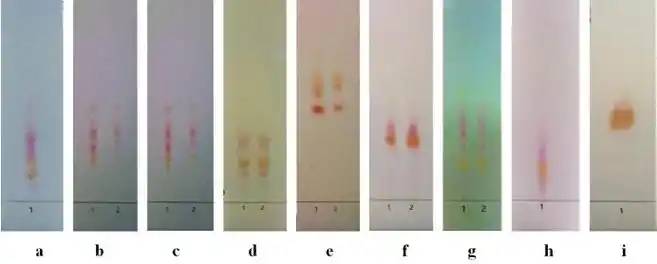
고속반류크로마토그래피 (HSCCC):최근 급속히 발전하고있는 새로운 형태의 액체-액체 분리크로마토그래피기술이다.그것은 tetrafluoroethylene serpentine tube의 방향성과 특정 고속 행성 회전에 의해 생성된 원심력에 의존하여 serpentine tube에서 캐리어가 없는 고정상을 안정적으로 유지하고 이동상을 저속으로 한 방향으로 고정상을 통과시켜 지속적으로 물질을 추출하고 분리하는 목적을 달성합니다.캐리어를 사용하여 비가역적인 흡착, 시료 변성 및 오염, 크로마토그래피 피크의 비정상적인 미행 등을 제거할 필요가 없다는 장점이 있습니다.시료는 정량적으로 회수할 수 있으며, 비극성 및 극성 성분을 분리하는 데 적합합니다.이 방법은 적포도주로부터 안토시아닌을, 정원사로부터 카로티노이드를 분리하는 데 사용되어 왔다.
원심액체 크로마토그래피:기존의 컬럼 크로마토그래피를 크게 개선한 것이다.기둥 대신 접시 모양의 원반을 사용하며, 원반에 흡착제를 펴서 사용한다.그 후 시료를 첨가하여 용출하고, 원심력의 작용에 의해 성분이 순서대로 분리되어 검출기에 의해 분절별로 채취된다.이 작업은 완전히 자동화되었습니다.이 방법은 분리 주기가 짧고 조작이 간단하다는 장점이 있다.색상 띠에 따라 구성품을 수거할 수 있습니다.일반적인 박층 크로마토그래피에 사용되는 실리카겔, 알루미나 외에 이온교환수지, 덱스트란겔 등도 흡착제로 사용될 수 있다.
3 응용 프로그램
포도 피부 안료:주성분은 말비니딘으로 보통 황산과 함께 와인 생산에 사용되는 포도 껍질에서 추출된다.pH는 색조의 변화에 영향을 줄 수 있으며, 용액이 산성일수록 붉은 색이 더 선명합니다.산성 환경에서는 안정적이지만 빛과 열에 대해서는 그다지 안정적이지 않다.음료에 사용하면 색갈을 강화하고 품질저하를 어느 정도 방지할수 있다.
쿠 스 색소:히비스커스는 열대 및 아열대 지역에 널리 분포하는 연중 직립하는 초목으로 아프리카가 원산지인 우드바인입니다.히비스커스의 calyx는 자줏빛이 도는 붉은색이며, 색소는 안토시아닌의 일종입니다.주성분은 델피니딘 (delphinidin) 이며, 시아니딘 (cyanidin)이 그 뒤를 잇는다.이것의 수용액 추출물은 특유의 신맛이 나며, 디펙틴 추출물은 천연 산성으로도 사용할 수 있다.이 색소는 포도 피부 색소와 성질이 비슷하다.음료에 색을 입히는데 익숙해지면 오래 보관하면 갈색으로 변하기 쉽다.
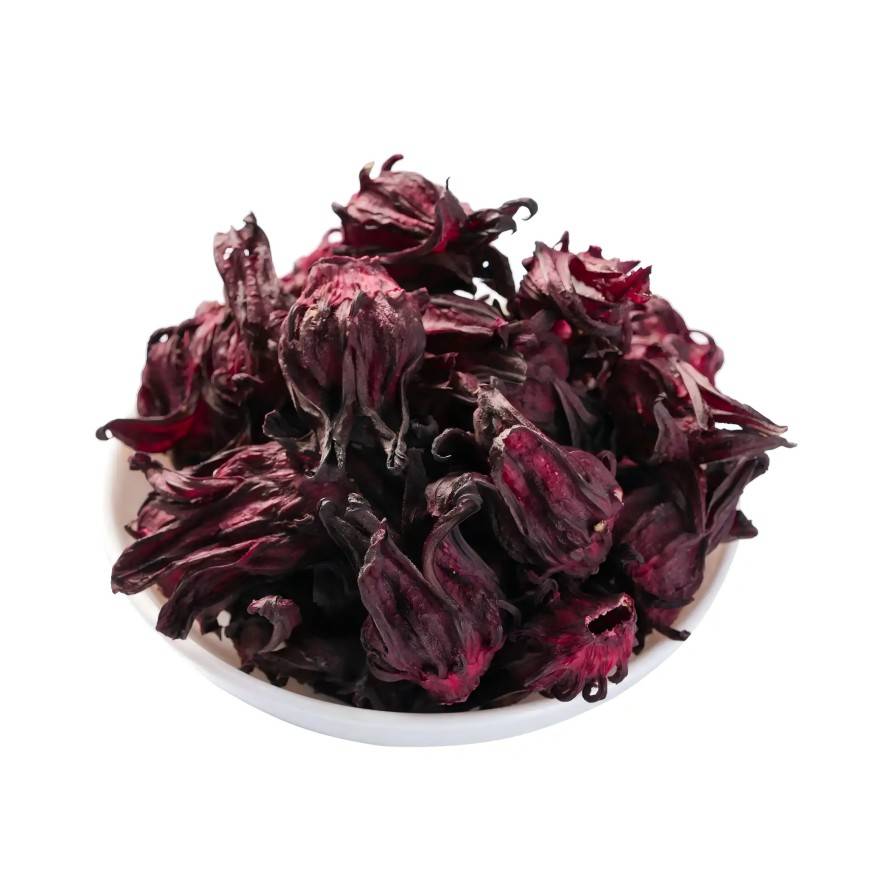
커:밝은 색상과 특출한 광택을 가진 비교적 안정된 색소.그것은 열과 빛에 강하며 주로 a로 사용됩니다황색 식용색소. It has the functions of clearing away heat, stimulating the appetite and strengthening the spleen, promoting digestion, and coloring. It is mostly used in the production of pastries, candies, canned goods, soft drinks, pickles, etc., and has particularly high medicinal value. It has been widely used in the pharmaceutical industry. Curcuminoids are the main active ingredients in the Chinese herb turmeric, which contains about 3% to 6% of them, including curcumin, demethoxycurcumin and bisdemethoxycurcumin. The similar structures of these three phenolic pigments (interconversion between the benzene ring diketone structure and enone, phenolic hydroxyl group on the benzene ring) give them similar pharmacological effects in many ways, such as anti-inflammatory, antioxidant and free radical scavenging, and regulation of blood lipids. In particular, their antimutagenic and anticancer effects have become a research hotspot, but the slight structural differences mean that the three curcuminoids have very different abilities in terms of anticancer and antioxidant effects. For example, demethoxycurcumin is best at inhibiting tumor cell proliferation caused by TPA, followed by curcumin; and demethoxycurcumin is best at preventing the formation of lipid peroxides in cells, followed by demethoxycurcumin. Therefore, extracting a purer mixture of the three curcuminoids from turmeric and further separating them can provide a good guide and practical value for actual drug production.
리코 펜: found in ripe tomatoes, as well as in watermelons, grapes and some other fruits and vegetables. 1 kg of fresh, ripe tomatoes contains 0.02 g of lycopene. Studies have shown that lycopene accounts for about 50% of the carotenoids in human serum and is most easily absorbed, metabolized and utilized by the body. It is also found in high concentrations in the testicles, adrenal glands and prostate. Since mammals cannot synthesize carotenoids (including lycopene) in the body, lycopene in the human body mainly comes from fruits and vegetables, especially tomatoes and tomato products. Epidemiological studies have shown that lycopene can reduce the risk of lung cancer, stomach cancer, prostate cancer, pancreatic cancer, colon cancer, esophageal cancer, oral cancer and uterine cancer. The 1997 report of the American Cancer Research Conference and the American Cancer Society Annual Meeting ranked tomatoes as the top anti-cancer food. At present, the world'의 개발 및 라이코 펜의 생산은 주로 식물 토마토, 화학 합성 및 기타 방법에서 추출됩니다, 이스라엘, 일본, 러시아 및 기타 국가, 뿐만 아니라 로슈, BASF와 같은 다국적 회사가 선두 위치에 있습니다.
사프란 황색 색소:빛과 열에 비교적 안정하며 박사의 영향을 받지 않는다. 이전의 연구에 따르면 혈액순환을 촉진하는 홍화의 활성성분은 주로 수용성 홍화황색소에 집중되어 있다.사프란 황색 색소는 찰코노이드 화합물로 관상동맥 확장, 산화 방지, 심근 보호, 혈압 감소, 면역 억제 및 뇌 보호 등 다양한 약리 학적 효과를 가지고 있습니다.홍화 황색 색소의 함량은 홍화의 효능을 평가하는 주요 지표 중 하나이다.홍화황색소는 한약재 홍화의 약리학적 성분으로 독성의 부작용이 없다는 연구결과가 나왔다.혈소판 활성화 인자에 의해 유도되는 혈소판 응집과 방출을 억제할 수 있으며, 혈소판 활성화 인자가 혈소판 수용체에 결합하는 것을 경쟁적으로 억제할 수 있다.의약은 물론 보건품, 식품, 화장품, 방직색소 등에 직접 사용할 수 있다.
파 프리 카 Oleoresin:잘 익은 고추에 함유되어 있는 천연색.주요 재료들은 β-carotene 그리고 capsanthin capsorubin, 어느 xanthophyll 가족에 속해 있다.이는 천연색연구의 열점이고 국내외 시장이 넓고 응용가치가 높다.파프리카를 추출하고 볶아 만든 가루색소는 물에 쉽게 녹고 내열성, 내염성, 내산성, 금속성, 미생물에 잘 녹는다.착색력이 강하고 분산력과 은신력이 좋다.그것은 식품, 의약 및 화장품의 생산에 널리 사용될 수있는 고품질 천연 색상입니다.일반 천연 안료와 비교해 더 높은 가격에 판매될 뿐만 아니라 생산 원가도 낮다.
제인과 제인술:제약, 식품 및 포장 산업에서 널리 사용될 수 있습니다.제인은 옥수수 전분 생산 부산물 (corn Zein)에서 추출한 카로티노이드 색소로, 식품 및 화장품 색소에 사용할 수 있는 천연 색소제입니다.제인술은 식용단백질의 일종으로 막형성, 접착성, 방습성이 좋다.그것은 제약 제품을위한 방습 외부 코팅 및 식품 제품을위한 신선한 유지 도료를 만드는 데 사용할 수 있습니다.제인은 필름 형성, 접착성 및 방습성이 우수한 식용 단백질입니다.그것은 제약 산업에서 방습 외부 코팅 및 식품 산업에서 신선한 유지 도료를 위해 사용됩니다.
니아 노란색:안전하면서도 독성이 없고, 담낭 기능과 해독을 촉진하며, 자연스럽고 선명한 색을 낸다는 장점으로 최근 많은 관심을 끌고 있다.중국인들은 오래전부터 정원류를 음식이나 물건 염색의 색소로 사용해 왔다.정원사 황색색소는 녹말, 단백질 등에 대한 염색능력이 뛰어나 패스트리, 파스타, 음료, 사탕 등 다양한 식품에 널리 사용된다.의약품 · 화장품 · 화장품 등 산업 분야에도 활용되고 있다.안전성이 높고 안정성이 좋으며 독성이 없고 부작용이 없다.따라서 국내외의 it 수요는 해마다 증가하고 있다.
아마란스 적색 안료:Amaranth stems and leaves are purple or green in color, rich in nutrients, and the seeds can be used as a topping. The purple stems and leaves contain bright pigments that can be used as food dyes or to color medicinal liquids. They are non-toxic, harmless, and stable. Natural amaranth red pigment is made from red amaranth (mature period is June to August), obtained by physical extraction and refinement. Its main components are amaranthine and betaine. It is a dark purple-red dry powder that is highly soluble in water and soluble in low-grade ethanol. Its solution is a clear purple-red color in the pH range of 2 to 7, with a soft and natural hue. Its physical and chemical properties are similar to those of the internationally-used 비트 붉은 색소, and it is suitable for coloring frozen foods and beverages that are stored for a short period of time.
호두 색소:호두는 Juglandaceae에 속하는 Juglans 속에 속하는 식물이다.약초, 염료, 기름 등의 기능을 겸비한 특수 환금작물이다.녹색 호두 껍질은 항진균 및 항암 약효 효과가 있을 뿐만 아니라 천연색 및 염료로 사용할 수 있으며 식품, 화장품 등에 널리 사용된다 [13-14].
4 전망
현재 중국은 비교적 적은 품종의 천연식용색소를 개발, 리용하고있다.대부분은 불안정한 원료 공급원으로 생산 여건과 계절에 따라 제한적입니다.게다가 원료는 조성이 복잡하고, 색소 함량이 낮으며, 생산 비용이 높아 널리 홍보하는 데 도움이 되지 않습니다.하지만, 기술 발전은 그것의 광범위한 사용을 가능하게 했다.상업적으로 사용된 최초의 천연색은 단순히 식물 추출물이었다.앞으로 사람들은 표준이 통일되고 유통기한이 길어진 고품질의 제품을 생산할 수 있게 되어 천연색에 대한 수요가 더욱 증가할 것으로 기대된다.점점 더 많은 식음료 가공 회사들이 합성색을 천연색으로 대체하여 더 많은 고객들이 자연스럽고 건강한 라이프스타일을 추구하도록 촉진시킬 것이다.따라서 천연색의 개발과 이용을 가속화하는 것은 피플 &을 보호하는데 긍정적이고 광범위한 의의를 가진다#39;의 건강과 농산물과 부업생산물의 경제적가치를 향상시킨다.
참조:
[1] Mosley-Brown N. 약용식물 [M].북경:중국우정출판사, 2000:59.
[2] 로찌 NL.토마토 가공부산물로부터 리코펜의 초임계 유체 추출 (J.한국농식품화학학회지, 2002(9):2638-2643.
[3] Li YY, Song GS.초음파에 의한 밤 껍질 색소 추출에 관한 연구 (J.식품공학, 2003(8):57-58.
[4] 왕젠위, 자오신.초음파에 의한 큰매화 kui의 꽃에서 색소 추출에 관한 연구.산림화학공업, 2003, 23(2):65-67.
[5] 리유, 류민지, 두유선 외.microwave 분야에서 카모마일 황색안료의 시너지 추출에 관한 연구 (J.광동성 미량원소과학, 2004, 11(9):48-52.
[6] 카이진싱, 류서풍, 리자몽 외.마이크로파-초음파법에 의한 chlorogenic 색소의 추출 및 물리화학적 특성에 관한 연구.생산과 과학연구 경험, 2003, 29(5):69-73.
[7] 왕웅.식품산업에서의 막분리기술의 응용.식품과학, 2000, 21 (12):178-180.
[8] 쉔 용겐, 샹광 신첸.자색고구마 색소의 추출 및 정제.장시농업대학, 2004, 26(6):912-916.
[9] Ru K. Y. M. W. Zheng, Y. P. Huang 등.자색고구마로부터 천연색의 추출과 분리.서남사범대학 논문집 (자연과학편), 2003, 18(4):590-593.
[10] Forgacs E. Thin-layer chromatography of natural pigments:New advances [J].한국액체크로마토그래피 및 관련기술, 2002, 25(10-11):1521-1541.
[11] 푸정성, 슈허알리, 왕창청 외.박층 크로마토그래피와 컬럼 크로마토그래피에 의한 란저우 적심무로부터 색소 분리에 관한 연구 (J.식품학, 2004, 25(6):49-52.
[12] 류샤오링, 서사인, 왕장.피타야 색소의 기본 특성 및 구조 규명 (J.식품생물학과 기술, 2003, 22(3):62-75.
[13] 왕소림, 왕소동, 류진풍.Juglans regia L.의 약초 규명 및 항암효과 연구 (J. 약학실무학회지 1995, 13 (1):40-42.
[14] 장예평, 양지보, 정수주 외.부제:review of the chemical and biochemical studies and biological activity of Juglandaceae plants.한약학, 2001, 32 (6):559-561.


 영어
영어 프랑스
프랑스 스페인
스페인 러시아
러시아 한국
한국 일본
일본